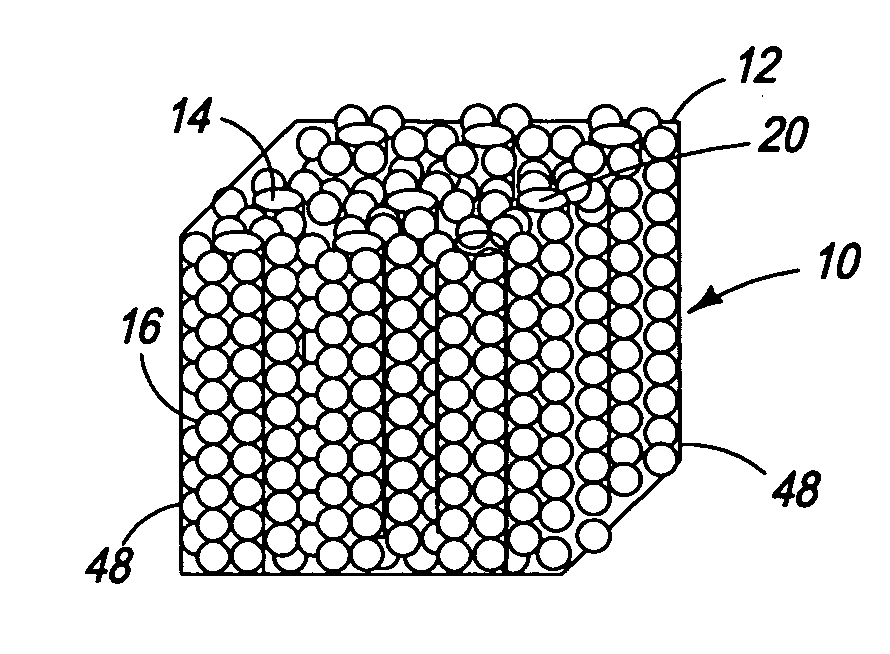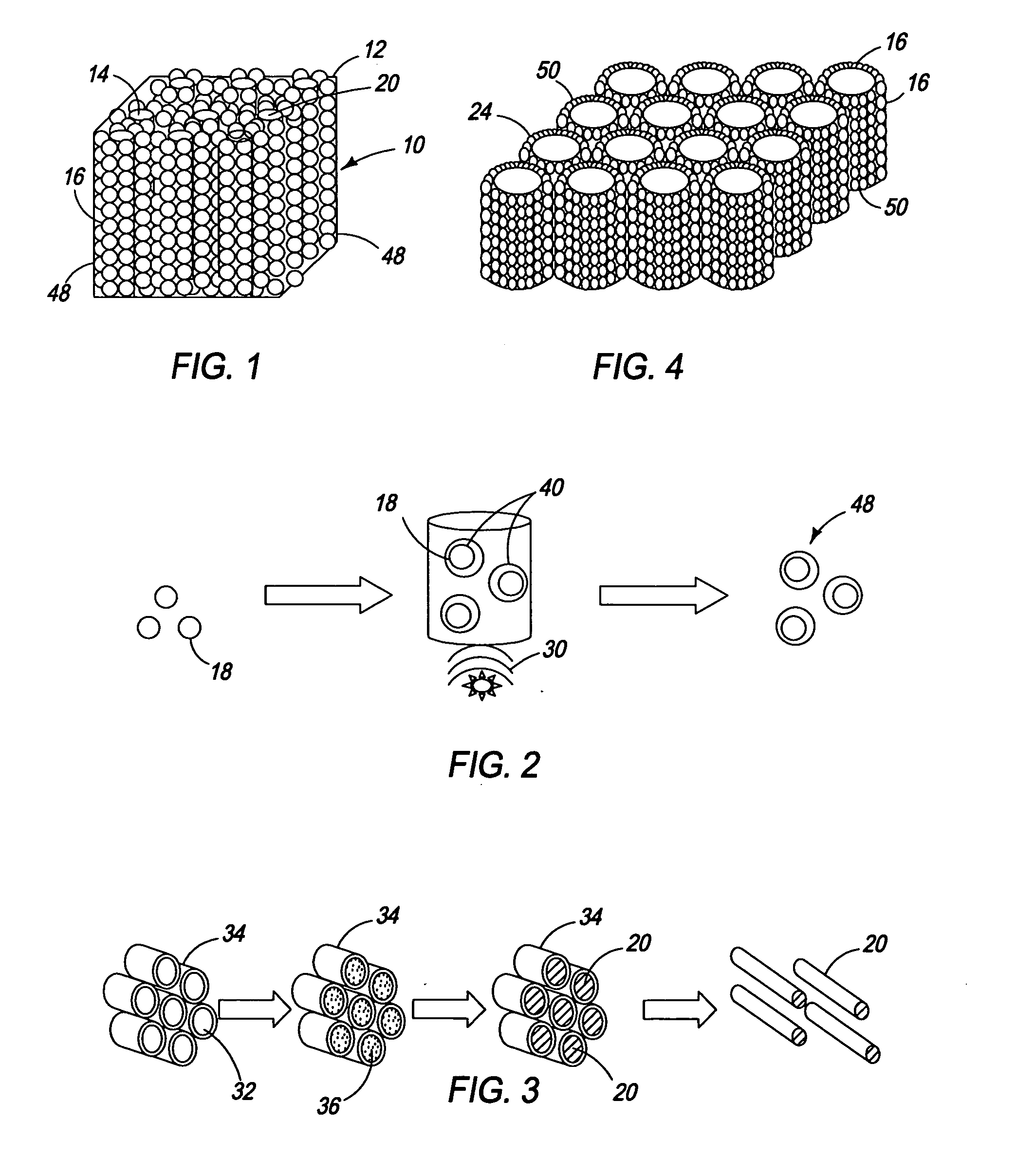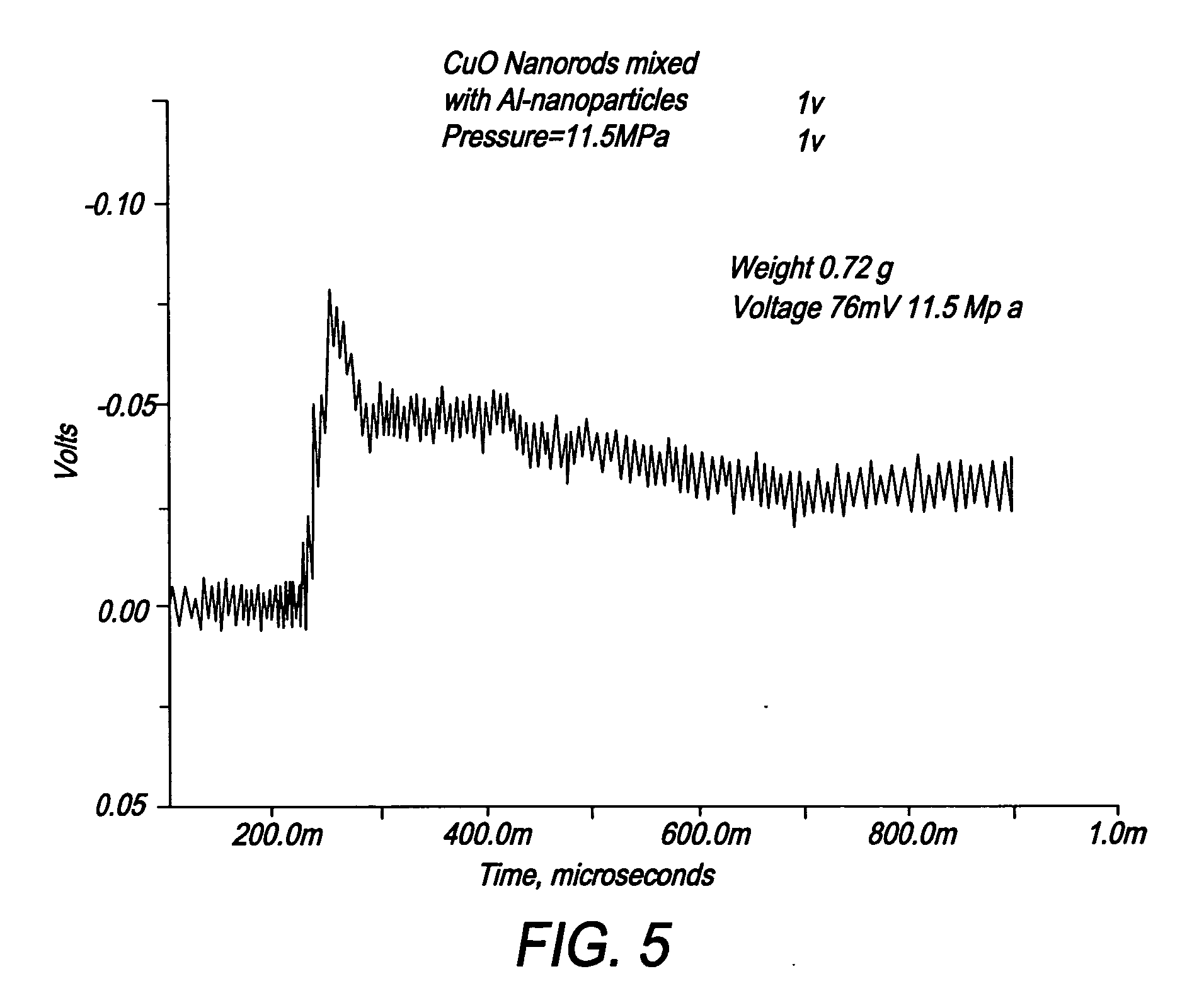Ordered nanoenergetic composites and synthesis method
a nanoenergetic composite and nanoenergetic technology, applied in the field of nanotechnology, can solve the problems increasing the interfacial surface area between the fuel and the oxidizer, increasing the energy expended, and reducing particle size, so as to increase increase the amount of available surface area. , the effect of increasing the potential for high interfacial surface area
- Summary
- Abstract
- Description
- Claims
- Application Information
AI Technical Summary
Benefits of technology
Problems solved by technology
Method used
Image
Examples
example 1
Synthesis of Copper Oxide Nanorods
[0046] For the synthesis of 5.045 g of copper chloride dihydrate (CuCl2.2 H2O, 99.5% Sigma Aldrich) was pulverized to a fine powder by grinding it in a mortar with a pestle. The finely powdered CuCl2.2H2O and 3.0 g NaOH were mixed together and 6.0 ml of PEG 400 (Polyethylene glycol 400, Alfa Aesar) was added into the mixture. This mixture was vigorously pulverized in a mortar for 45 minutes. During grinding, the copper chloride and sodium hydroxide were forced into the micelles of the PEG 400. The CuCl2 and NaOH then reacted to form CuO nanorods inside the micelles. The PEG 400 coating was removed by washing with water and ethanol.
example 2
Synthesis of Coated Aluminum Nanospheres
[0047] Aluminum nanoparticles were made by sonicating 0.42 g of aluminum in 300 ml of 2-propanol for 5 hours to achieve homogenous dispersion. To this solution, 1 ml of 0.1% solution of poly (4-vinylpyridine) in 2-propanol was added and the resultant solution was sonicated for an additional 2 hours. This solution was centrifuged until a clear supernatant was obtained. The solid recovered from the centrifuge was added to fresh 2-propanol, and the process of sonication followed by centrifugation was repeated 4-5 times to remove excess polymer. The coating that remained on the nanoparticles was substantially a monolayer.
example 3
Self-Assembly of Nanoenergetics
[0048] One gram of copper oxide nanorods was sonicated in 200 ml of 2-propanol for 4 hours. The well-dispersed aluminum nanoparticles were then added into the nanorod dispersion. Adter sonicating for 3 hours, the final solution was dried at 120° C. to obtain the self-assembled nanocomposite.
PUM
| Property | Measurement | Unit |
|---|---|---|
| frequency | aaaaa | aaaaa |
| diameter | aaaaa | aaaaa |
| diameter | aaaaa | aaaaa |
Abstract
Description
Claims
Application Information
 Login to View More
Login to View More - R&D
- Intellectual Property
- Life Sciences
- Materials
- Tech Scout
- Unparalleled Data Quality
- Higher Quality Content
- 60% Fewer Hallucinations
Browse by: Latest US Patents, China's latest patents, Technical Efficacy Thesaurus, Application Domain, Technology Topic, Popular Technical Reports.
© 2025 PatSnap. All rights reserved.Legal|Privacy policy|Modern Slavery Act Transparency Statement|Sitemap|About US| Contact US: help@patsnap.com



